The Industrial Revolution revolutionized the world. It was a revolution that revolutionized the world and American society in particular.
The Revolution revolutionized society by bringing about industrialization and mass production. Industrialization brought about the Age of Machines, mass production, the labor revolution, class struggle, and urbanization.
Together, these changes formed part of the foundation for modern society. Without delving into the history of industrialization too much, we will discuss its impact on American culture here. We will tell you what it was, how it affected America, and if there were any benefits.
We’ll explore some of the most significant aspects of the Industrial Revolution and how it changed America. We’ll discuss the economic impact of the Industrial Revolution, its impact on society, and its role in shaping the country we know today.
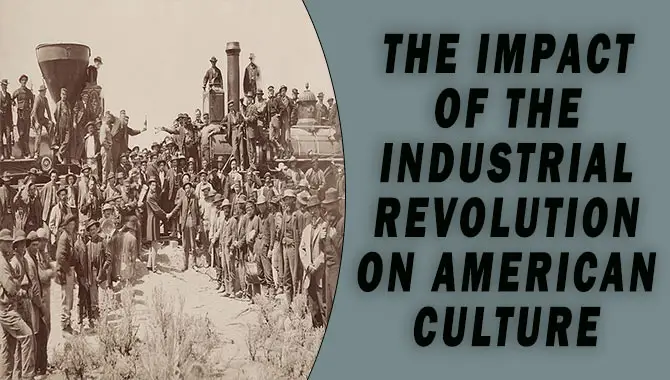
What Is The Industrial Revolution?
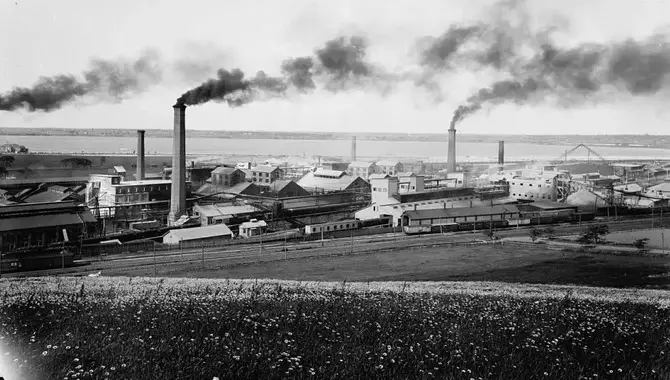
The Industrial Revolution was a period of rapid technological advancement and economic growth in Britain from the late 18th century to the early 19th century. This period saw the development and mass production of machinery and technology, such as the steam engine, mechanical loom, and textile machine.
The Industrial Revolution revolutionized the way goods makes, transforming the economy from one based on agriculture to one driven by industry. This transition created new job opportunities for those who could operate these machines, such as mechanics, millers, and factory workers. As a result of this technological advancement, Britain became one of the world’s leading industrial powers.
The Industrial Revolution Comes To America

The Industrial Revolution began in Great Britain in the early 19th century and quickly spread to the United States. The Revolution marked a time of great change for industrial nations, with the introduction of new technologies and organizational models that led to the rise of mechanization and mass production. Samuel Slater credits with introducing industrialization to the United States by building a water-powered mill in 1789.
Slater is known as the “Father of the American industrial revolution,” having opted for manufacturing as a business venture rather than farming, a choice that revolutionized American society. These developments helped shape modern society by increasing labor productivity, spreading education, lowering costs, and fostering innovation.
In addition to technological innovations, organizational changes also played a major role in industrialization. These changes included the rise of capitalism and laissez-faire economics, which advocated individualism and free market principles.
These developments shaped America’s economy and society as we know it today.
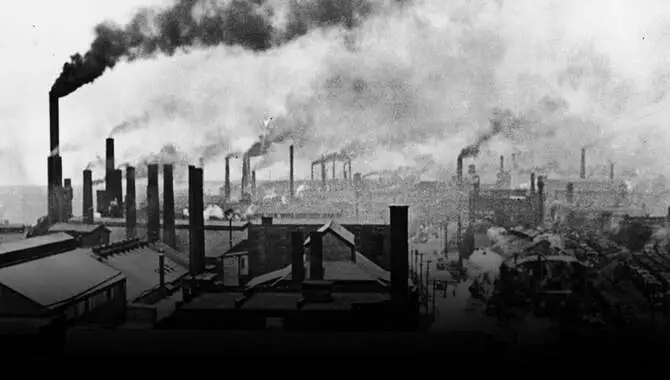
The Impact Of The Industrial Revolution On American Culture: Analysis On The Industrial Revolution was a time of significant technological and social change in the United States. It was a time of mass economic growth, mechanization, and urbanization that radically altered the American landscape and economy. The impact of the Industrial Revolution on American culture was profound, affecting the arts, politics, medicine, and more.
One of the major impacts of the Industrial Revolution on American culture was the field of art. Art became increasingly popular throughout America as artists such as Thomas Eakins, Winslow Homer, and Edgar Degas created paintings that captured the beauty and energy of America’s landscapes.
In addition to art, other fields also benefited from the Industrial Revolution. Technology developed rapidly in fields such as medicine and transportation, leading to vast improvements. As a result, many lives were saved, and travel became much easier for Americans.
The impact of the Industrial Revolution on American culture was far-reaching and has had a lasting impact on American society. Through technological advancement, changing art styles, and medical advancements, Americans have been able to live healthier and happier lives.
Causes Of The Industrial Revolution In America
The Industrial Revolution affected America in many ways, including sparking a boom in technology, creating new industries, and revolutionizing transportation and communication. The Revolution also brought about new social and cultural norms and encouraged the growth of the American middle class. Here are some of the major causes behind the Industrial Revolution in America.
– Increased Demand for Goods: During the Industrial Revolution, increased demand for goods led to increased production and manufacturing. New technologies, such as the steam engine, were invented, which made machinery more efficient. These machines required vast amounts of raw materials to be manufactured, thus fueling the increase in demand for goods.
– Technological Advancement: Another major cause behind the Industrial Revolution in America was technological advancement. New inventions like electricity and automobiles allowed businesses to become more efficient and produce more goods with fewer resources.
– Increased Access to Resources: Another key cause behind the Industrial Revolution in America was increased access to resources like iron ore, coal, and timber. These resources fueled the rapid growth of manufacturing because they provided a reliable supply of materials that could use in factories.
– Rise in Skilled Labor: The rise of skilled labor during the Industrial Revolution contributed to greater productivity and efficiency in factories because it allowed them to produce more goods with fewer workers.
– Growth of Infrastructure: Infrastructure like roads and railroads grew rapidly during the Industrial Revolution as manufacturers needed better transportation networks to transport their products across the country.
Effects Of The Industrial Revolution On American Culture
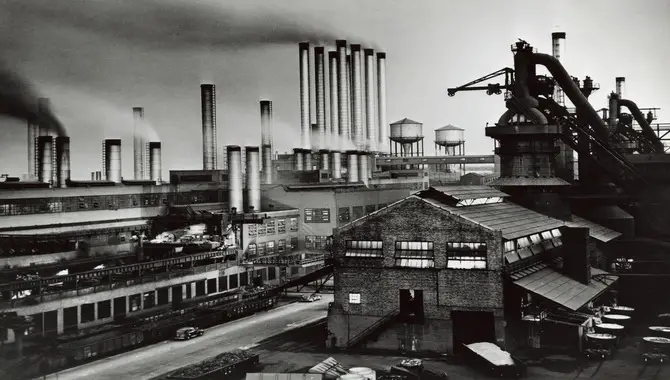
The Industrial Revolution profoundly impacted American culture, with technological advancements altering the socioeconomic climate and cultural aspects of the United States. During this period, industrial factories and mills became prominent features of the American landscape, revolutionizing the socioeconomic conditions of working people. The 19th century was also known as the second industrial Revolution when industrialization rapidly transformed America into a global powerhouse.
This Revolution increased job opportunities and urbanization, which allowed many Americans to escape poverty and become middle class. Despite the positive effects of industrialization, it also led to the exploitation of women and children and long working hours. The environment was heavily affected by industrialization as cities grew rapidly, polluting the air and water supply with toxic chemicals.
Things To Keep In Mind While Studying The Industrial Revolution
The Industrial Revolution of the 19th century brought new technologies, such as the steam engine, railroad, and telegraph, which revolutionized the world. However, it was also a time marked by great social upheaval and economic downturn. The Revolution affected every part of life – from economics to politics to culture. It played a significant role in shaping modern society.
The Revolution ushered in new modes of production and consumption, creating new ways of living for people worldwide. As a result, people started working longer hours and traveling more extensively. This led to an explosion in the population, which increased from around 1 billion at the start of the Revolution to over 6 billion today.
The Revolution also saw great changes in social relations between men and women. Women began working outside their homes and earning money for themselves, leading to the legalization of female property ownership and equal inheritance rights between spouses.
There were many other changes as well due to industrialization. Consider the short-term effects of industrialization, like increased mechanization of agriculture, urbanization, pollution, and urbanization, among others. Also, consider the long-term effects like improved living conditions and higher productivity after industrialization.
What Were The Major Effects Of The Industrial Revolution On American Culture?
The Industrial Revolution brought technological innovations to Europe and North America, leading to a shift from rural lifestyles to more urban populaces. This Revolution led to cheaper clothes and more job opportunities, which increased labor demand. As a result, the working conditions of laborers improved significantly.
The Revolution also resulted in new industries, such as the automobile industry. As these new industries grew, so did their demands for labor and raw materials. The Revolution caused changes to the social and cultural aspects of the US, such as the exploitation of women and children, long working hours, and environmental damage. Overall, the Industrial Revolution had a profound impact on American culture.
What Were The Benefits Of The Industrial Revolution?
The industrial Revolution brought a range of positive benefits, including increased life expectancy due to fewer deaths at birth, increased manufacturing production, and improved transportation. This Revolution in the mechanization of the industry helped reduce the amount of manual labor and thus made people’s lives more comfortable and prosperous.
Wage fairness became an issue as labor was replaced by machinery. This resulted in the creation of jobs for unskilled laborers. Moreover, with the development of factories during the Industrial Revolution, people started working for longer hours, which contributed to the modernization of society.
The Industrial Revolution also made clothing cheaper, allowing people to work less to earn more money. Additionally, the Industrial Revolution improved social conditions, such as reducing unemployment, alcohol consumption, and crime. Overall, the Industrial Revolution brought many positive human life changes that enhanced living standards and quality of life.
Were There Any Positive Impacts Of The Industrial Revolution?
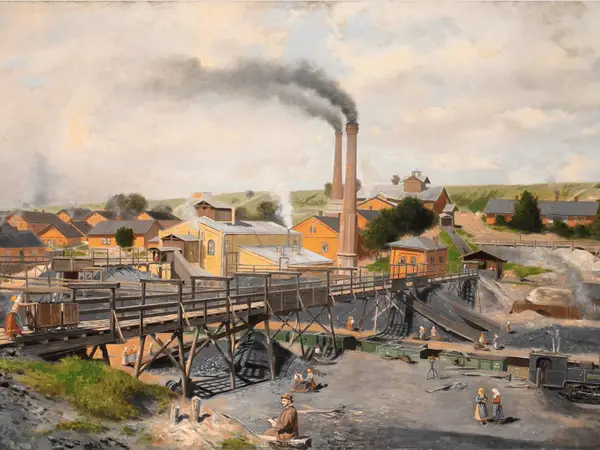
The Industrial Revolution was a period of historical change in the mid-to-late 18th century, marked by the rise of new manufacturing industries and the revolutionizing of agriculture. The Revolution brought a rise to industrial production and innovations such as mechanization and automation. This Revolution increased job opportunities, luring the population from rural lifestyles to urban populaces. These changes contributed significantly to the growth of cities and nation-states.
The Industrial Revolution also led to cheaper clothes being produced. This revolutionized the fashion industry and created exciting technological innovations that improved transportation systems, communication, and leisure activities. It altered socioeconomic conditions and changed cultural aspects in unprecedented ways, bringing about a new era for humanity.
Conclusion
The Industrial Revolution revolutionized how people produced goods and changed how people lived. The Revolution ushered in new technology, such as machinery, that revolutionized work and industry. It also led to changes in the working conditions of laborers, including the introduction of machinery, production lines, and mass production.
While it is undeniable that industrialization revolutionized the world in many ways, it also had far-reaching and negative consequences. Some effects include urbanization and a society based on wage labor, societal alienation, overpopulation, and environmental degradation.
We have explored some of the major ways in which the Revolution changed American society. We hope you find this information useful as you continue to learn about the history of the United States.
Frequently Asked Questions
1.How Did The Industrial Revolution Change Family Structures In Britain?
Ans: The Industrial Revolution greatly increased Britain’s wealth and allowed for a larger middle class. This led to more families having a higher standard of living, including those with children working in factories. Additionally, the transition from the domestic system of industrial production to the factory system heavily impacted family structures.
2.What Exactly Is The Fourth Industrial Revolution, And Why Should You Care?
Ans: The Fourth Industrial Revolution term describes the fusion of advances in AI, robotics, the internet of things (IoT), web3, blockchain, 3D printing, genetic engineering, quantum computing, and other technologies. This Revolution is set to profoundly impact the workplace, with the disappearance of certain jobs and the emergence of entirely new ones. Some of the key impacts of the 4IR include: GPS systems, virtual assistants, and personalized recommendations becoming increasingly important in our lives.
3.Would It Have Been Possible To Have Had The American Industrial Revolution Without Immigrants?
Ans: Yes, the industrial Revolution could have been much different without the contributions of immigrants. During the Industrial Revolution, immigrants made up a large workforce due to the lack of political support for the largely immigrant and female labor force. The rise of industrialization during the 19th century resulted in a shift from an agricultural society to one based on wage labor, leading to increased immigration to America.
4.What Is The Significance Of Industrialization In America’s Past And Present-Day Economy?
Ans: Industrialization in America has had a major impact on the economy since the late 19th century. It has led to increased mechanization and the development of the modern electric grid. The rise of mass production, the assembly line, and the automobile industry have all been made possible by the Industrial Revolution.
5.Why Is It Important To Study The History Of America During This Period?
Ans: The Industrial Revolution in America was a major shift that changed how we lived and worked. It began in the early 18th century and lasted until the early 20th century. Increased labor and capital, new production techniques, and transportation advances like the railroad marked this period. The second industrial Revolution, which spanned from 1870 to 1914, established America as a world industrial power.

I’m a writer and blogger who loves to talk about entertainment, culture, and relationships. I love to share my thoughts and insights on these topics, and I’m always looking for new ways to engage with my readers. I’m also a big fan of learning new things, so I’m always exploring new areas of interest.
